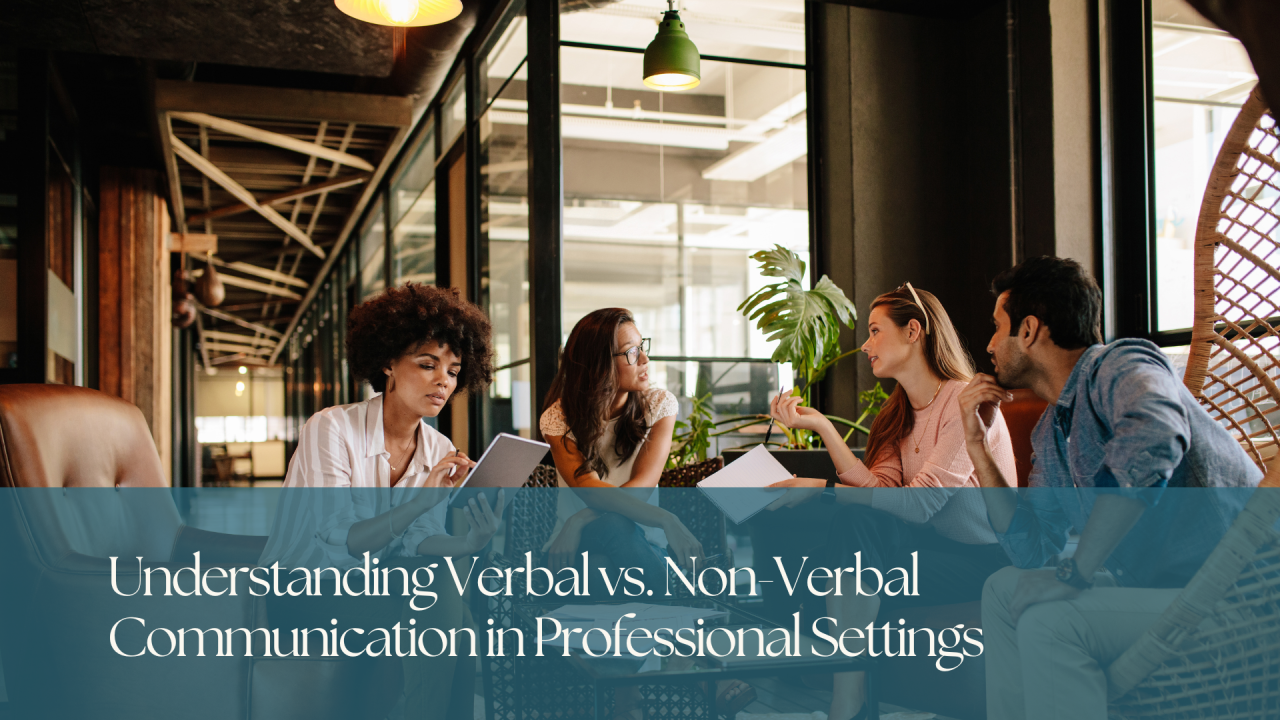Effective communication forms the backbone of success in any professional environment. Whether delivering a presentation, leading a meeting, or engaging with colleagues, the way we communicate has a profound impact on outcomes. Communication goes beyond the words we use; it’s about how we say them—and, crucially, what we convey without words.
In this article, I’ll explore the key differences between verbal and non-verbal communication and how mastering both can elevate your professional interactions.
Verbal Communication: The Power of Words
Verbal communication encompasses the words we use to deliver our message. It is direct, often clear-cut, and, when used effectively, can be incredibly impactful.
Clarity and Precision: The primary strength of verbal communication lies in its clarity. Choosing words carefully allows for the precise and concise conveyance of complex ideas. This is especially vital in business settings, where misunderstandings can lead to costly errors.
Context and Adaptation: In verbal exchanges, context is essential. Adapting your language to suit your audience—whether a team member, client, or executive—can make your message more relatable and impactful.
Non-Verbal Communication: Speaking Without Words
Non-verbal communication includes all the ways we convey meaning without using words, such as body language, facial expressions, gestures, eye contact, posture, and even the space we maintain between ourselves and others.
Body Language: Your posture, gestures, and movements can signal confidence, openness, and engagement—or the opposite. For instance, standing tall with shoulders back conveys confidence, while crossed arms may suggest defensiveness.
Facial Expressions: Our faces are incredibly expressive and often convey emotions without conscious effort. A smile can make you seem approachable and friendly, whereas a frown might indicate disapproval or confusion.
Eye Contact: Maintaining eye contact is a powerful way to build rapport and show attentiveness, indicating that you are engaged and value the interaction.
Proxemics: The study of personal space, or proxemics, explores how physical distance impacts communication. The space you maintain can indicate intimacy, formality, or even assertiveness.
The Synergy of Verbal and Non-Verbal Communication
The most effective communicators align their verbal and non-verbal cues. When words and body language are in sync, the message is more likely to be understood as intended.
Consistency: Ensure your non-verbal signals support your verbal message. For example, if offering positive feedback, your facial expressions and tone should match the positivity of your words.
Reading Others: Attuning yourself to others’ non-verbal cues can reveal insights into their genuine thoughts or feelings, even if their words suggest otherwise—particularly useful in negotiations or conflict resolution.
Cultural Sensitivity: Non-verbal communication can vary significantly across cultures. Awareness of these differences helps avoid misunderstandings and fosters more effective global communication.
Conclusion
Mastering both verbal and non-verbal communication is essential for anyone aiming to excel professionally. By understanding and leveraging the strengths of each, you can better convey ideas, build relationships, and achieve your goals.
Remember, communication isn’t just about talking; it’s about connecting. Next time you’re in a meeting or conversation, pay attention to both your words and actions—you might be surprised at how much they reveal about you.

